If you’ve spent any time looking for ways to DIY digital marketing for your business, it’s easy to feel intimidated by all the great information out there. And, it can feel overwhelming wondering when you’ll have time to do it all.
I know it’s hard to believe that you could take focused action in just half an hour a day and see results, but I know firsthand it can be done.
In this guide to digital strategy, I’ll show you exactly how to DIY your online marketing in just 30 minutes a day.
This time-tested, comprehensive guide cuts through the noise to provide proven strategies for effectively marketing your business.
I’ve implemented these same general strategies since the early days of my business. And while the recent introduction of AI tools and the diminishing returns from purely organic SEO and social media marketing have made us reevaluate our strategies and recommendations, the same people-first, values-driven principles hold true.
I used this 30-minute-per-day method with three dozen local business owners through our Local Rockstar program over 3-4 years. Each one got results and discovered more time for joy and ease in their day-to-day.
Now, with major updates for the realities of 2025, this DIY digital marketing guide is available for any founder looking for an accessible roadmap to marketing their business with confidence and sustainability.
This resource will walk you through budgetary considerations, components of your DIY digital marketing strategy, and how to be consistent over time with your efforts.
Though your digital strategy will require ongoing work and attention, don’t be overwhelmed. I’ll cover each step with you and even give you a downloadable checklist to get started.
- Please note that some of the links provided below may be affiliate links, which means that if you make a purchase through those links, Realign Consulting may receive a commission at no additional cost to you. We only recommend products and services we have tested and/or use ourselves, so we feel confident recommending them to you.
Effective DIY digital marketing requires understanding the critical importance of your website.
It’s common for people to refer to a website as a business’s home on the web. However, I’d argue that your website is more like a car—a functional, moving thing that needs regular maintenance to get you where you want to go.
You wouldn’t expect to buy a car and never think about it again, but you’d be surprised how many people do this with their websites.

Your website is your vehicle. Your email list is your fuel tank. Everything else is borrowed transportation that could disappear tomorrow.
In 2025, owning a reliable vehicle has become more critical than ever. Think of third-party platforms like rideshare services that used to be convenient and affordable but are now unreliable, expensive, and likely to change their routes or raise prices without warning.

With shadow bans, massive algorithmic changes, and platforms like Meta (Facebook and Instagram) becoming increasingly restrictive and costly, relying on these platforms is like trying to build a business around catching rides from a service that might strand you at any moment.
Early in my career, I encouraged clients to invest heavily in building their Facebook presence—it was like having access to a reliable taxi service. But now, businesses on Meta’s platforms face declining reach among younger users, policy changes that alienate key demographics, and pay-to-play hurdles so expensive they’re barely sustainable. In today’s digital landscape, relying on third-party marketing platforms is as hazardous as driving on black ice.
Meanwhile, the rise of LLM-powered search and micro-community platforms (think Reddit and TikTok) means the old “big 3” social platforms aren’t the main highways they once were. There are now more efficient, niche backroads to reach your audience, but they all lead back to the same destination: what you actually own.
Like a car, your website requires fuel, maintenance, and upgrading to serve you well.
You must regularly maintain and tune up your website over time; there is no “set it and forget it” here. Just like you put gas in your car to keep it running, your website uses regular, fresh content.
Content can include copy, photos, videos, and more, and we’ll dive into the details later in the guide. But first, here’s a key point to remember:
We’re no longer in a copy-dominant website space.
While strong writing is still essential, you now have the freedom to lean into whatever type of content comes most naturally to you and your team. Some people are natural video creators, others excel with photography and imagery, and some are born writers.
If you’re DIYing your digital marketing, focus on the content type that’s easiest and most enjoyable for you to produce consistently—this is where you should invest most of your fuel.

The point isn’t the specific content type; it’s how effectively you can communicate, engage, and connect with your stakeholders. Your authentic voice will always cut through the noise better than perfectly polished content that drains your energy to create.
In addition to regular, fresh content, your website requires updates and structural maintenance.
You’ll want to check often to make sure there aren’t any hidden issues. Your website should be evaluated at regular intervals for optimizations and updates.
And, like cars, websites eventually wear out, or you’ll be in the market for a new model. Your site will likely need to be overhauled around the three-year mark. Technology changes fast these days, and you’ll need to keep up.
If you’re a brand-new business, think of yourself like a teenager getting your first car.
The first car I ever bought for myself was a little red Cavalier. It wasn’t fancy, but I loved it. It got me where I needed to go, and it taught me how to take care of a vehicle. I can’t imagine having gone out at that age and looking for a fully loaded Mercedes. I wasn’t ready for that responsibility yet, and I couldn’t have maintained it.
This applies to our businesses, too.
If you’re a brand new business, your website is going to be more like a used Cavalier than a top-of-the-line model. With this first model, you will learn what it takes to maintain and care for it, and there will be a learning curve at first.
Your first website probably won’t have all the bells and whistles you see on big companies’ sites—and that’s perfectly fine.
You don’t need a big fancy website yet. The amount of money you’d have to pay for a site like that isn’t worth it for you right now; there are far better ways to use your budget.
Average Cost to Outsource a Basic Website Build in 2025
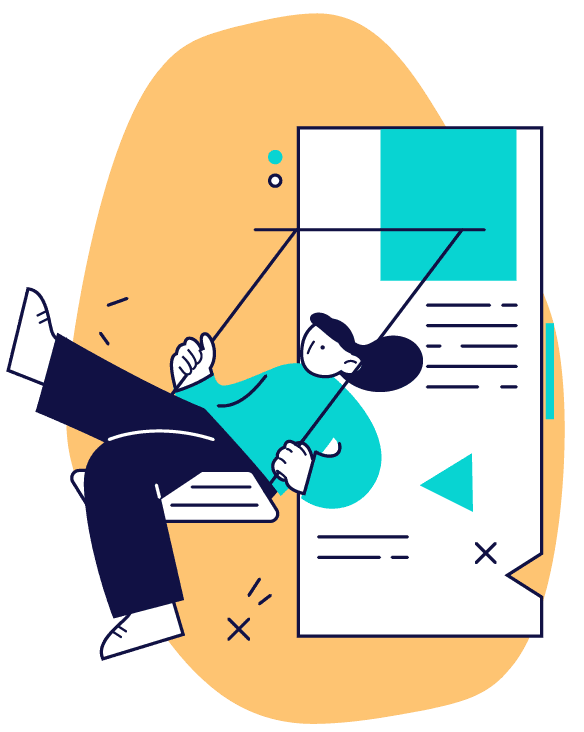
Expect to spend at least $5-10K to outsource your website build. Also, keep in mind that the cost of professional copywriting has dropped significantly as of 2025, driven down by the widespread perception that LLMs (ChatGPT, Claude.ai, etc.) can replace experienced professional copywriters. While this isn’t entirely true, LLMs are making the creation of good (read: good enough) copy faster and easier, making basic website copy more affordable than in previous years.
If outsourcing is still outside of your budget, then consider using affordable, easy-to-use site builders like Squarespace, Shopify, or Wix to create your own website (for domain name registration, I highly recommend NamesCheap). You can pocket the money saved and invest it in other areas of your business. Then, when you’re more established a few years down the line, you can look to improve your website to get more reliable lead flows or provide a better user experience.
Your first site is your workhorse, and you may discover after using it for a while that you want to stick with it, even if your budget increases.
Some businesses never upgrade their websites because the ones they have are functional, and that’s fine too. You don’t have to be the flashiest site on the web to attract business.
If you’re just starting out but don’t want to DIY your digital marketing completely, consider outsourcing for professionally-written copy.
Based on 2025 costs and the current capabilities of generative AI, I recommend doing the opposite:There’s nothing wrong with having a limited budget; most of us have been there in the early days of our businesses. However, a common mistake in this situation is to spend the money you do have on web design and write the content yourself.
Based on 2025 costs and the current capabilities of generative AI, I recommend doing the opposite:
Get the most from a tight budget by prioritizing human-crafted messaging.
As business owners, we form sustainable connections with our customer base through our unique messaging. When your budget is limited, focus on honing that message. That could look like…
Enhancing your own basic copywriting skills through strategic use of AI
We don’t recommend using AI for all of your marketing needs—much less using it to write all of your copy*—ChatGPT and other similar tools can help you streamline some copywriting tasks.
In 2025, it's become much more feasible for non-writers with good reading and comprehension skills to use LLMs as an assist to produce their own copy for starter sites. Think of AI as your virtual "junior copywriter"—it can help you brainstorm, structure your thoughts, and polish your drafts, but you're still the creative director making the strategic decisions and ensuring the voice authentically represents your brand.
We still believe professional copywriters are worth the investment when your budget allows, but if the money simply isn't there, creating quality copy yourself is more doable than ever before—as long as you approach AI as a tool to enhance your own voice rather than replace it entirely.
However, to get good results, you will need to spend time training the AI in your brand’s voice, tone, target audience, and more. We recommend investing in a paid version of whatever LLM you choose to avoid the risk of accidentally sharing proprietary information.
If your existing content isn't performing as well as it used to, consider a brand refresh before training an LLM or hiring a copywriter. A focused, distinct voice is easier to replicate and makes a stronger impact in crowded markets.
OR, hiring a junior-level copywriter to fine-tune your messaging using marketing best practices.
When you’re starting out, it’s okay to hire someone for digital who’s also new to the field. You’ll save money and help someone get experience, which are both great things. However, it's best to temper your expectations. You won’t get the same level of output as someone with more experience—but that’s okay. Depending on your business, this could be a great way to outsource on a budget.
- Pro tip: When vetting a new copywriter, be sure to ask questions about how they use AI to ensure their practices are in line with your brand's values.
*More on why I do not recommend having AI write all of your content for you:
My team and I have been pretty excited to see what tools like ChatGPT are capable of. But while it’s tempting to use AI-generated content for your business, there are many reasons to avoid complete reliance on this technology right now:
-
AI-generated content can seem dishonest.
People tend to respond poorly if they feel that they are being tricked into interacting with a robot when they are expecting a human. Plus, search engines like Google are still figuring out how they want to handle AI-generated content in search rankings, and you don’t want to accidentally sabotage your chances of being found online. -
AI-generated content may use other people’s content without crediting them.
Plagiarism—even done unintentionally—can hurt your business. Besides being morally wrong (and probably not in line with your company’s values), it can also negatively impact your rankings with search engines. -
AI repeats patterns from the past.
It cannot innovate based on real-time information and events the way an experienced marketer can. Plus, it is unable to intuitively weave your messaging into your wider strategy, mission, and goals for your business. -
AI operates on an algorithm.
It cannot harness empathy to form deep, meaningful connections with your audience. It cannot effectively mimic your personal stories or embody the values that resonate with the people who want to support your work in the world.
Maximize the value of $4-5K by focusing on technical support, not design.
If you have several thousand dollars to spend, consider investing in a copywriter, a self-builder website, and some professional technical support—and skip on the digital designer for now.
We always use a copy-first marketing strategy with our clients because the words companies use—and how they use them—determine if the right people see the right message at the right time to connect with your brand.
And, when over 63% of searches are performed on a mobile device, ensuring your website is optimized for mobile is more critical than ever. That means there are no annoying pop-ups that users can’t click away, images and text are easy to see, and navigation is intuitive and straightforward. If you’re not confident in your technical skills or run into a roadblock when building your site, consider hiring professional technical support to ensure your site hits mobile-first metrics.
What about brand images?
Ideally, professional photos of you and your customers do the best job of supporting your message and connecting with your audience. However, as camera technology continues to improve, your amateur photos could potentially—and temporarily—handle the job.
In 2025, AI tools have made it possible to DIY decent imagery with basic image structuring know-how. Like copywriting, the DIY options for visual content are more accessible than ever before. AI can be particularly helpful for editing your own photography or creating concept imagery for your brand.
However, avoid the temptation to use AI-generated "fake" people imagery and try to pass it off as reality. This approach can backfire and damage trust with your audience. Instead, use AI tools strategically to enhance your authentic imagery or develop conceptual graphics that support your brand without misrepresenting your actual business.
If AI-enhanced DIY imagery isn't feasible right now, stock imagery remains a perfectly acceptable placeholder until your budget expands.
Outsourcing on a Limited Budget Do's and Don'ts
Consider hiring for...
- Professional junior copywriter
- Affordable web-builder platform
- Technical website support as needed
Don't hire or wait to hire for...
- Website designer
- Professional photography
How to Use This Guide to DIY Your Digital Marketing
I suggest working through the Stage Building and Search Foundations sections before you look at the other material.
This layout is intentional. You need to understand your audience, keywords, what your current site does—and doesn’t do—well, as well as how to set up things like your Google Business Profile before you move on. These are the things most people skip when marketing their business and then have to go back and fix later on.
Most business owners go straight into setting up their social media accounts and posting away, and that’s understandable. You’re excited about your business, and you want to spread the word and connect with folks. However, it’s much easier to start correctly than to clean up mistakes.
If you’ve already started and made some mistakes, don’t worry. This guide will still help you. Take a pause from your current activities, read over the sections in the order I recommend, and then go back to your strategy armed with new knowledge on how to proceed.
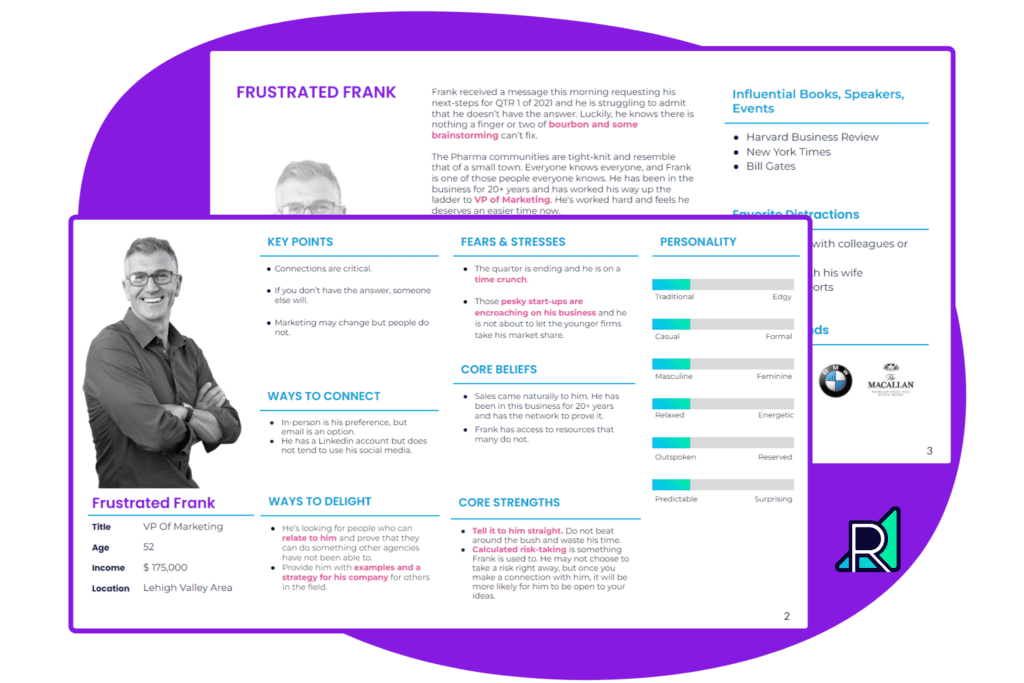
What you spend your 30 minutes each day working on will be different, depending on where you’re at with your business.
I believe in values-driven digital marketing, which means how you spend your time looks different for every business. It’s all dependent on what phase you’re in and what your values are. There’s no one-size-fits-all advice here.
Here’s my general advice for working through the rest of this guide:
- If your business is newer, you’ll probably be looking to get the biggest bang for your dollar. Just like a teenager might wash their own car or change their own oil to save money, you’ll be looking to maximize your return on what you do choose to spend money on.
- If you're more established and have regular cash flow, you’ll probably be looking to grow your product line or customer base. You’ll spend your time differently because you’ve likely outsourced some of your marketing functions and don’t have to DIY those tasks as much anymore.
First Things First: For DIY Digital Strategy, Start With These Foundational Components
There are many parts to an effective and sustainable DIY digital strategy. You’ll start by building the foundation that all other activities will rest on.
Prepare Your DIY Digital Marketing Strategy With Stage Building and Design
You may be tempted to jump right in, but you have some systems to put in place first. You always want to build the stage before you put on the production, right? The staging and design phase is where you get prepared. Here you’ll be gathering information and putting a plan in place before moving forward with specific tactics.
This phase consists of looking at four components:
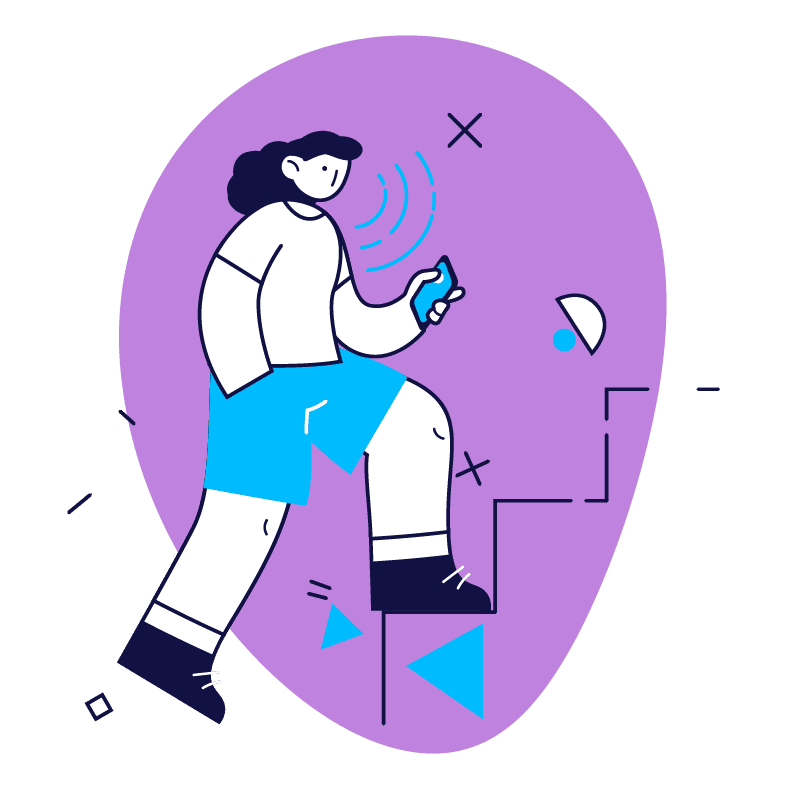
Stakeholder Personas (aka Raving Fans)
Stakeholder persona communities are the first step in building your digital strategy, and we've expanded this concept beyond traditional buyer personas to more effectively engage communities of support.
A company's stakeholders are those with a vested interest in the business—including employees, customers, shareholders and/or owners, vendors, and their families. This group also includes the community where the business is located if it uses the resources of that community.
By thinking beyond "who will buy from me?" to "who cares about my success?", you create a broader foundation for authentic engagement. Your stakeholders become your raving fans—the people who appreciate your business and want to connect with you in genuine ways. Everything you do to market your business should center around this expanded community of support.
Keyword Strategies
Keywords are an important but often overlooked component of your digital strategy foundation. However, while they remain relevant in 2025, we're seeing that keyword-driven content development has become a system of diminishing returns. Keywords can inform and augment your content, but user experience and context must come first.
Before you create any content, you should still do basic keyword research to help you find words your site can rank for in search results. However, rather than building your entire content strategy around keywords, use them as supporting elements that enhance the content you're already creating for your stakeholders' genuine needs and interests.
Website Audits
If you already have a website, you’ll want to take stock of what you’ve done well and where you can improve. Auditing your website consists of reviewing your content and formatting, evaluating your design and functionality, and checking everything for search engine optimization.
In 2025, speed and mobile performance continue to dominate the user experience landscape. Simply put, the greatest content will not win if the basic technical pieces are overlooked. Your audit should prioritize how quickly your site loads and functions on mobile devices, as these factors directly impact whether visitors stay long enough to engage with your carefully crafted content.
Content and Production Plans
Creating content and production plans helps you see how all the pieces fit together and how customers move through their journey with your business. This is where you map out what content you'll create, when you'll create it, and how it connects to your stakeholders' needs at different stages of their relationship with your brand.
A solid content plan also helps you stay consistent—one of the most challenging aspects of DIY marketing. Planning ahead means you can work more efficiently by grouping similar tasks together, reusing content across different platforms, and avoiding that last-minute panic when it's time to post. Consistency beats perfection when you're building trust with your audience over time.
Again, while I do not recommend relying on AI for your digital strategy, it comes in handy to streamline some of the tasks mentioned above. Using ChatGPT for marketing requires understanding its strengths and limitations, but it can help with things like brainstorming content ideas, generating a list of possible keywords to jumpstart your research, and creating survey questions to help you better understand your audience.
Now that you have your persona descriptions, keywords you want to target, and actionable items to improve on, you can create a brief one-page plan for your DIY digital marketing to move forward. Why do I want you to keep it brief? It’s more important to get focused on a few small areas than to think of every single thing you might want to do with your marketing.
Help Those Who Are Looking for You Find You With Basic Search Engine Optimization
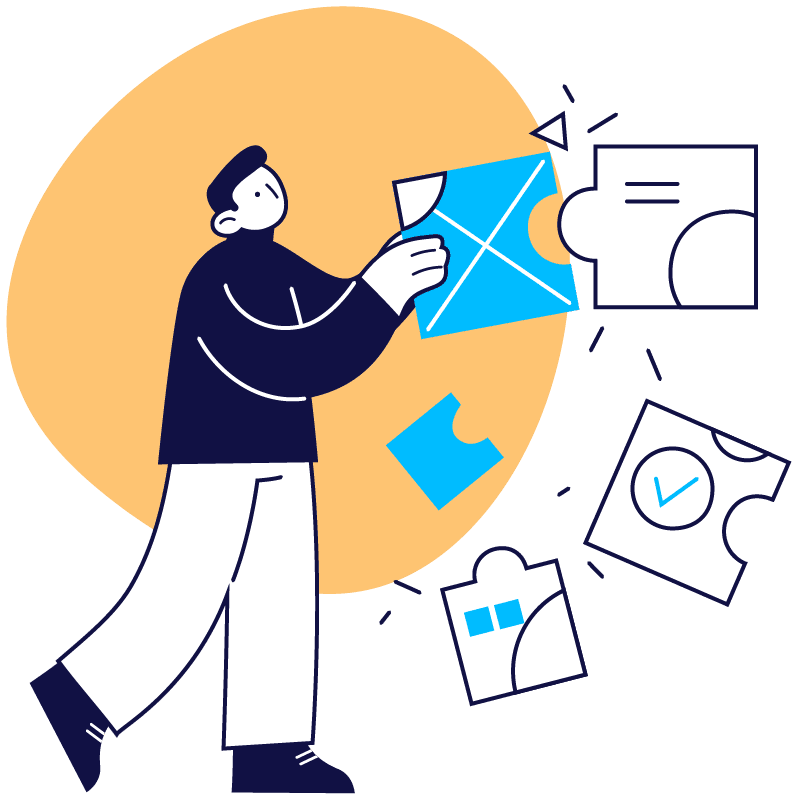
Search engine optimization (SEO) can do a lot for your business. This is how you get free, organic traffic to your website and how new people find out about you. While your raving fans—who you met during persona development—are always your first priority, SEO is also a valuable tool to connect with new people and grow your audience. Fortunately, there are several great resources available to help you with this part of your DIY digital marketing.
Local Search & Google Business Profile
Imagine there’s a woman looking for what you offer just a couple of miles away from you. She’s typing in a search on her phone and reviewing the results that pop up. Google will deliver her tailored results based on her location and keep it to a nearby radius.
We know that people are likely to visit the top search result given to them within 1-2 days. That means that if you’re the top result, a new customer may be in touch with you very soon!
The way to rank in searches like these is to optimize your Google Business Profile. If you take the time to work on your profile, you will start seeing results.
Google Data & Monitoring Tools
Using Google’s data and monitoring tools is essential to understand how people are finding your site, what the trends in search are, and how well you are performing both against your own goals and against your competitors. Luckily, you don’t have to be a data scientist to use today’s tools! To get started, you’ll need two completely free Google tools set up for your site beyond the Google My Business Profile mentioned above. They are:

The Monitoring Tool
More and more, Search Console is contributing to reporting data. But for beginners, its key use is as a monitoring tool. Using Search Console will help you ensure your sitemap is properly set up to be crawled, all pages are working as they should, and your metadata is having the desired effect in a search. Get started with Ahref’s guide to Search Console.

The Reporting Tool
Analytics can be a complex and infuriating tool, but it doesn’t have to be. If you start with the very basics, you can get an important understanding of how users interact with your site and which pages are most successful. Search Engine Journal has a very helpful guide to help you get started with this fantastic tool.
User Experience Monitoring
In addition to basic Google tools, it’s essential that a site meant to be your primary business driver has deep user experience monitoring. Our favorite monitoring tool for beginners is HotJar. This tool uses heatmaps and interaction recording to help you understand how users experience your site pages, your menus, and more.
Alternative Search and Discovery Platforms
While Google Search remains dominant and most important for community-based businesses in 2025, it’s experiencing a significantly declining market share for the first time in years. For non-local companies, there may be more efficient ways to gain exposure and traffic.
Small companies are finding success by expanding beyond Google SEO to reach their audiences. Privacy-focused search engines like DuckDuckGo and Bing are growing in popularity, and industry-specific social platforms provide direct pathways to specific industries and customer groups. Plus, more people are searching directly through LLMs like ChatGPT and Perplexity, creating new opportunities for businesses willing to optimize their content for AI discovery.
The key is to meet your audience where they’re already looking, rather than fighting for space in an increasingly crowded Google landscape. Start with one or two alternative platforms that align with your stakeholders’ behavior, and test what works before expanding your efforts.
Take Time to Experiment With What Works Best for You and Your Business
Now that you’ve done the work to evaluate your website, get to know your raving fans, and optimize your local SEO, it’s time to move on to the next phase: Practice and Growth.
The good news is that most of the heavy lifting for DIY digital marketing is now out of the way, and we’ve arrived at the fun part! I often refer to this phase as the dance party, so put on your party hat and grab your streamers. Practice and Growth is the phase where you get to play around a little.
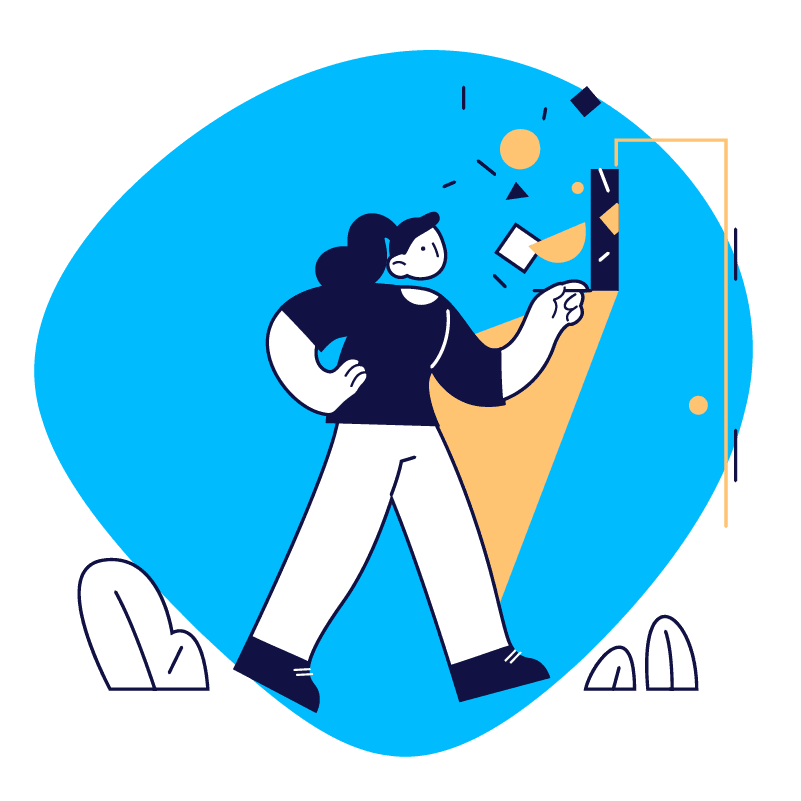
Your Trinity Principle Platforms
For small or new businesses—especially those with limited resources—I recommend against relying on social media to market your business. These platforms require a lot of time (and often money) to see results that are not reliable or sustainable.
Instead, I teach my clients to use the The Trinity Principle™ to better focus and optimize their resources. When companies are choosing their main three platforms, instead of places like Facebook or Instagram, I recommend local and/or niche community-building platforms such as NextDoor, Mighty Networks, or Circle.
LinkedIn Success Plan
LinkedIn is one of our favorite underutilized tools. It’s specifically intended to help you foster business relationships, and it tends to be more organically driven; both of those reasons make it a great place to spend some time as you grow your business.
The LinkedIn Success Plan is a habit tracker. It asks just a few minutes of you each day in order to engage your VIPs and generate some new business. Click here to get your free copy.
VIP Scorecard
The VIP Scorecard is a way to measure and track how much business you can expect to get, based on your networking efforts. Use this scoring tool as a self-assessment to more accurately determine how much time and energy you’re investing in relationship-building activities.
The scorecard assigns a point value to different actions, and you’ll work toward different point goals per week, depending on where you are with your business. Click here to get your free copy.
Create content that resonates with your audience to expand your impact and growth.
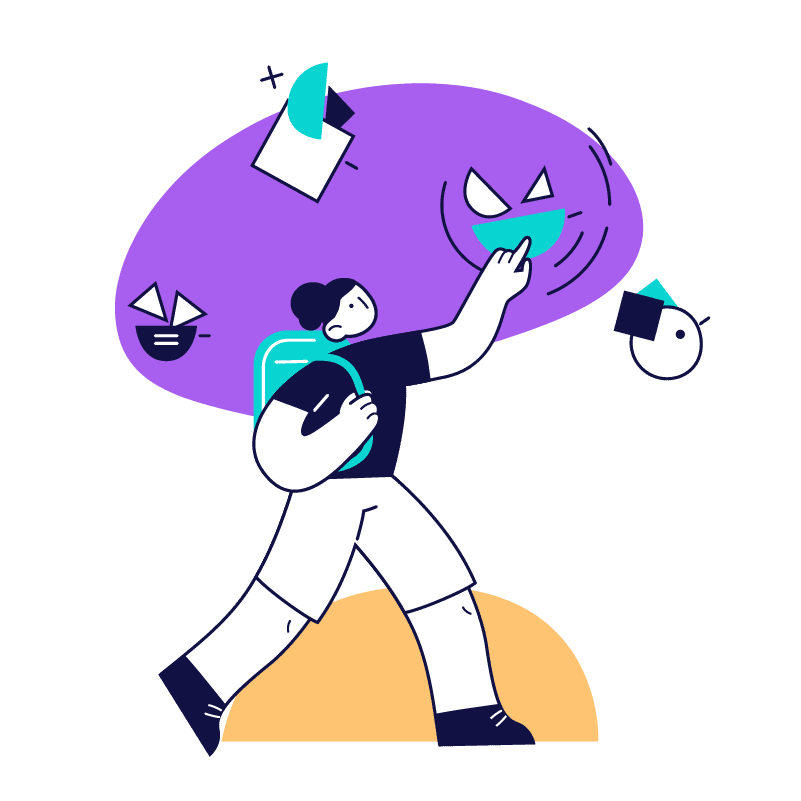
The party continues! Creating content that will catch people’s attention and make your customers want to interact with you is the focus of our next phase. How and what you create is largely up to you, and there are pros and cons to each format.
Copywriting
Great copy is pure magic and the easiest way to engage and connect with your community. If you don’t have the budget to hire a copywriter for all of your needs, consider investing in someone who can develop your core pieces, such as your…
- Home page
- About page
- Landing pages for your main products/services
- Welcome email for your email newsletter
- Major blog posts that explain what your brand is all about
Then, repurpose that content by using it for…
- Email newsletter topics
- Social media topics
- Blog post ideas
- And more!
Whether you rely on your own writing skills or—as I mentioned above—use AI to enhance your writing, remember to put the focus on your audience first. When you understand your raving fans (from the persona step) and focus on building connection, that’s where the magic happens.
Digital Design
Good design is not always the one that looks the prettiest. What’s more important than form is function; you want a design that works. Your design should be user-friendly, accessible, and engaging. Great design prioritizes user experience, fits into your larger brand design, and, yes, also looks nice.
Video
If you have a natural talent for creating face-to-camera explainer videos, this medium might be something to consider and can have a powerful impact on marketing your business. With the latest phone technology and very affordable microphones, effective video marketing has become more accessible for small businesses than ever before.
However, we don’t believe video is a must for every business, especially those with limited resources. Doing video well can quickly become pricey, and the return on your investment may not be worth it. Click here to learn more about whether video marketing is right for you.
Regular Reviews Help Optimize Your DIY Digital Marketing Strategy
As I talked about with the car analogy, digital strategy is never a “set it and forget it” deal. You need constant tuning and upkeep if you want to be able to keep your car in working condition. Be prepared to look under the hood regularly and tinker with things as needed.
Schedule monthly reviews and use our free checklist to ensure you don’t miss the little things.
Lack of consistency is a compounding problem, and little things can quickly become big things if they’re not addressed. Plus, making tiny adjustments each month keeps your DIY digital marketing from becoming overwhelming.
In addition to going through the checklist, check in regularly with these two areas to keep your DIY digital marketing strategy relevant:
Thinking TRA-Digital (supporting your digital strategy with more traditional practices)
The digital marketing space has become a much more competitive place to play. Thanks to shifts in technology, there are many changing variables right now. I encourage the smaller businesses I work with, especially location-based companies, to continue to focus on more traditional marketing tactics.
In 2025, traditional, offline marketing will become increasingly important for micro businesses. Simply put, organic (as in few or no ads) performance is extremely difficult to achieve online. It’s likely worth the effort to get out from behind the screen and into traditional networking and print as a very efficient way to use a micro-budget.
This recommendation has been evolving for us since 2021, and we understand it represents a HUGE shift in how we believe micro companies can build the most effective sustainable marketing plan.
As company resources grow, this calculus shifts again, and digital may become the higher performer once more. But we think the rise of the myth that “if you’re good enough, you can break through for free online” is doing a lot of harm to small companies who would be better served getting off the computer and into the community in 2025—which is the exact opposite of what I would have told them to do in 2015.
Be sure to support your digital efforts with relationship-building strategies, such as networking (via the VIP Scorecard), participating in local events, and even sending out postcards or flyers to current and potential customers. Often, we’ve seen these methods perform even better than digital ads and social media.
Data-Driven Forecasting
Continue to pay attention to what you set up above with Google’s data and monitoring tools. It’s easier than ever before to look at what your customers want so you can add value to what you offer.
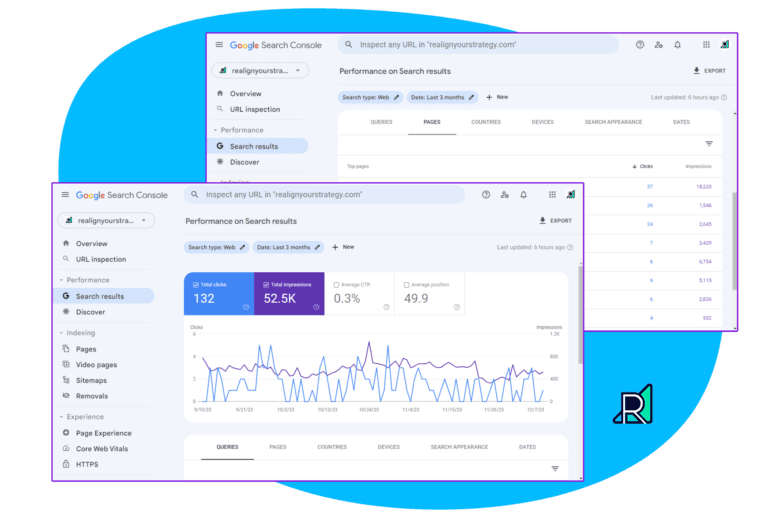
There is a lot of data you can find using these, but you don’t have to dive deep right off the bat. Just check in regularly on general metrics: Are your conversions going up? Is your traffic rising? Are people leaving the website faster than expected?
Strategic Paid Advertising
Let’s be honest: we don’t believe a 100% organic strategy is possible for a new or unestablished business in 2025. (Yes, this sucks, and we’d like someone to prove us wrong about this—if you can, please send us a message!)
However, you can start to get results with smart advertising strategies with as little as $500 a month. The key is choosing the right platforms for your specific business and audience rather than defaulting to the obvious choices.
Consider these options:
- Spotify Ads for businesses targeting specific demographics through audio content
- Legacy platforms like Eventbrite for event-based businesses or industry-specific advertising platforms
- Traditional, offline ads like restaurant placemats or school planner ads that often have even lower price points
The goal isn’t to advertise everywhere—it’s to find the one or two platforms where your stakeholders are most likely to discover you and strategically invest your limited budget there.
Consistency is king. Here’s how to make sure your DIY digital marketing strategy actually happens.

While a technical review of your website can be done once a month, developing your digital strategy requires a more consistent commitment.
It’s generally better to take just a few minutes each day to work on the things in this guide than to sit down for a few hours once a month. It doesn’t matter how great your content is if you aren’t regularly interacting with people and updating it—and monthly won’t cut it.
Carve out the time in your calendar each day.
Set a timer on your phone and work on these things for about 30 minutes at a time. Don’t be afraid to create boundaries in this way; many people are scared to work on any of this because they think they’ll end up losing track of time, but setting a timer will knock you out of the zone and remind you to move on.
Finally, Celebrate Your Wins. All of Them.
I see a lot of business owners get down on themselves when they feel they only have a few followers or not enough traffic. Something I learned from Tara McMullin that has always stuck with me is the “Living Room Strategy.”
Basically, it’s easier and more rewarding to fill a living room than a huge venue. If you’ve got a handful of people interacting with you, imagine those people in your living room. Now that doesn’t seem like such a small number, right? It seems like a pretty good gathering and a cause for celebration.
Take time to notice every single small win you have along the way. A digital strategy is never really done, which can be hard to understand at first. If you’re looking for an endpoint, you’ll always be frustrated and eventually burn out. The way to build a sustainable business is to celebrate as you go.
Pat yourself on the back when you get ten new subscribers to your community. Show your best friend the blog you spent half a day creating. Engaging in these little moments of joy will help you stay motivated.

Remember: When you grow past a certain point, it’s time to think about hiring out.
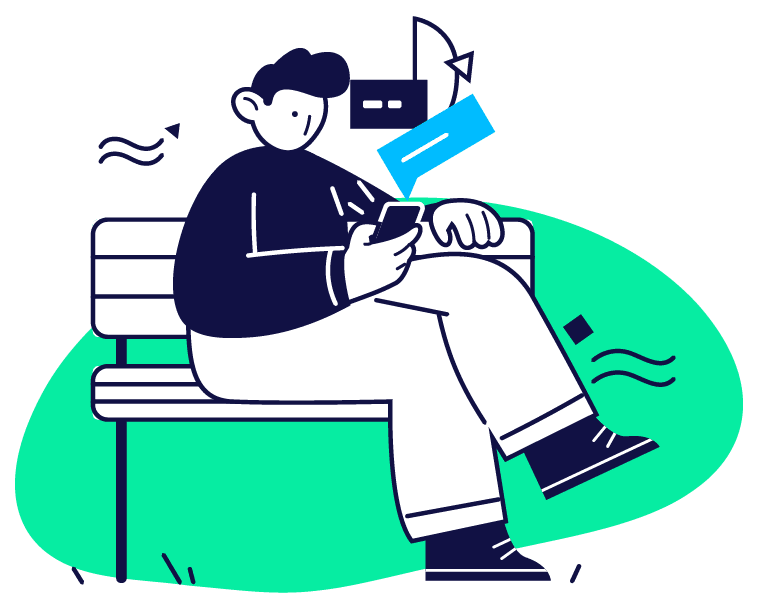
When you’ve grown to the point where you can spend a few thousand dollars a month or more, it’s a good time to start looking for outside help. Consistent income like that usually means you’re making headway with your digital strategy, and your own time will be better spent focusing on higher-impact activities. A great place to start outsourcing is with one-time projects, such as our Do Better Digital™ Marketing Solutions.
And, keep in mind that if you are currently spending only a few hundred a month on outside help, you’re probably better off using this guide to do the work yourself. Until you reach that $2-$4K mark, keep plugging away with your DIY digital marketing tasks and creating consistent habits until you get there—and you will get there.
This Guide Reflects Our Commitment To Do Better Digital™
I’ve been working with business owners who take their businesses very personally for a long time, and I’ve seen a lot of things. Many of them didn’t sit well with me. A lot of marketing companies are predatory. They want your money in exchange for their services and information, and they won’t offer anything outside that.
I don’t think that’s fair. I think you’re better off saving the money you can, especially when you’re just starting out, until you grow to a place where you really need help and can afford it.
A lot of companies make the same mistakes over and over, and I want to help steer you in the right direction. I am confident that if you do the things listed in this guide, you can absolutely grow your business.
Go further
GET HELP WITH EVERY STEP OF YOUR DIY JOURNEY, ON-DEMAND NOW.
You did it! You made it to the end of our DIY Digital Marketing Guide. I know this is a lot to take in, but I also know that you can do this.
If you’ve followed the guide the way I’ve laid it out, I am confident that you’ll build a foundation from which to grow your business. And if you decide you ever want to dive deeper, our Digital Marketing Solutions are always available to provide custom support to your business.

